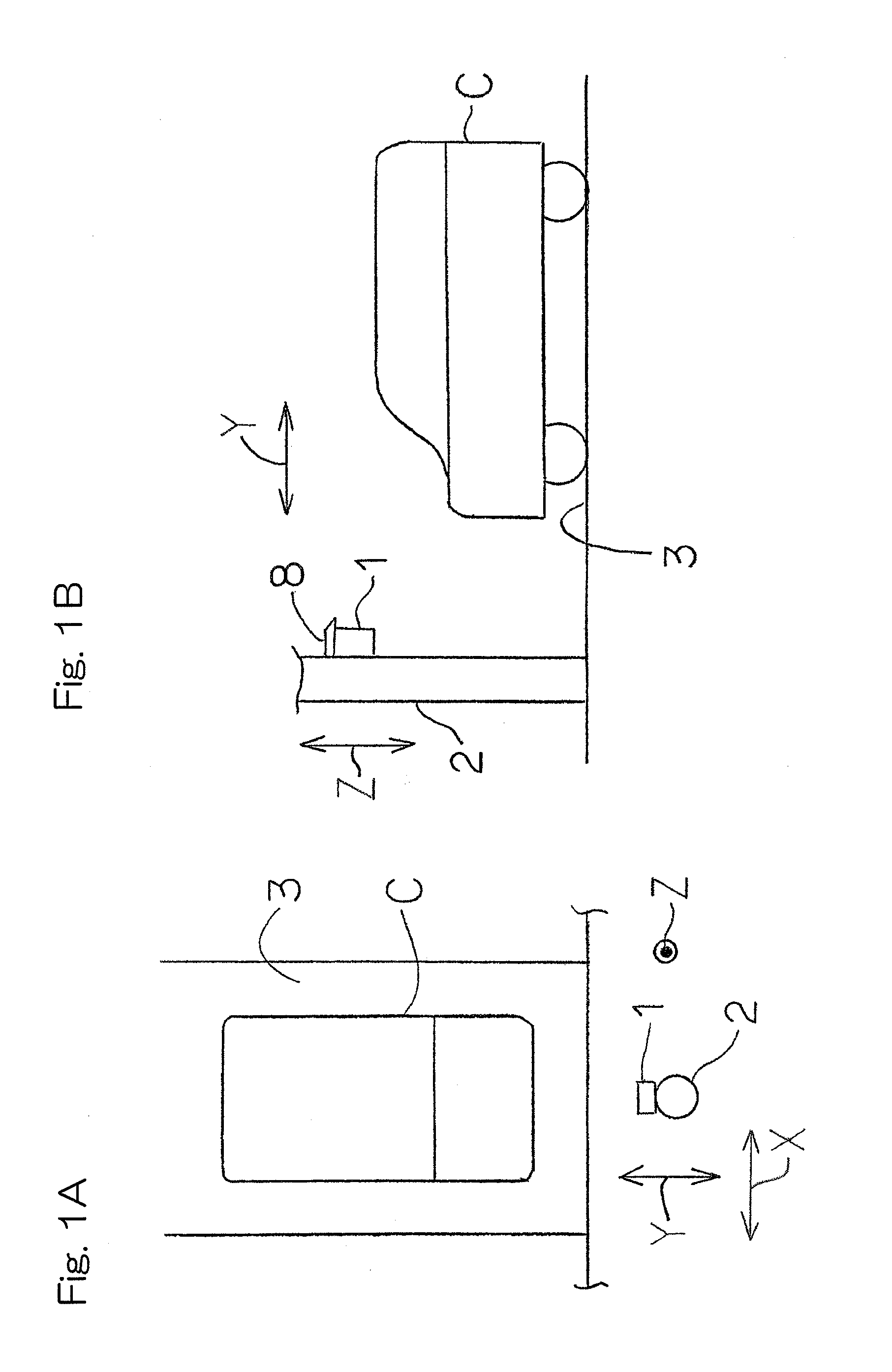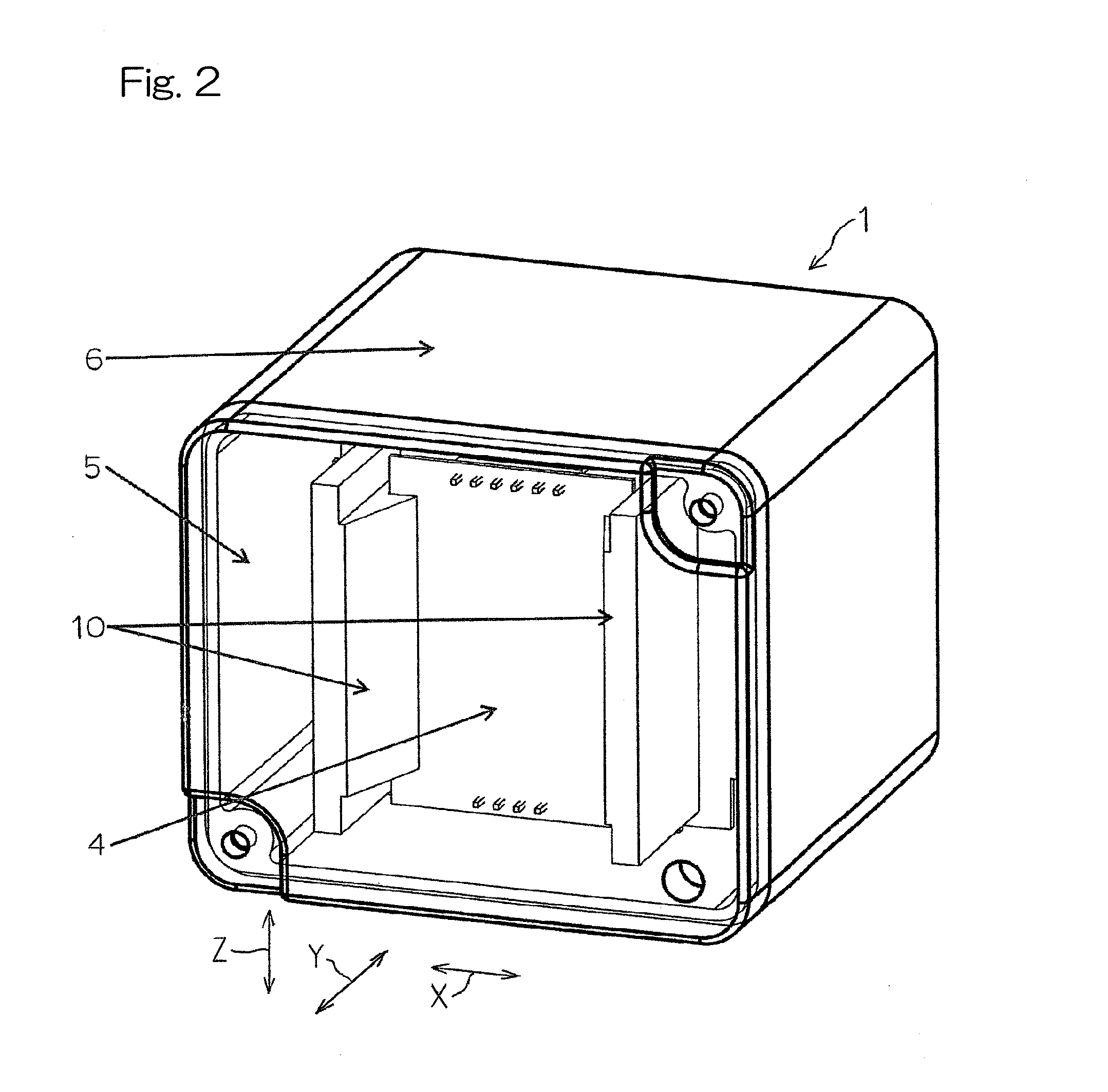Vehicle detecting sensor assembly
a sensor and vehicle technology, applied in the direction of radiating element housings, instruments, measurement devices, etc., can solve the problems of adversely affected, inverse operation, impaired or tampered outward protruding horns, etc., to reduce the influence of the sensor assembly brought about by the fall of water, reduce the impact of water drop on the surface of the radome, and facilitate installation
- Summary
- Abstract
- Description
- Claims
- Application Information
AI Technical Summary
Benefits of technology
Problems solved by technology
Method used
Image
Examples
Embodiment Construction
[0031]Hereinafter, a preferred embodiment of the present invention will be described in detail with particular reference to the accompanying drawings. In particular, FIG. 1A illustrates a schematic top plan view showing the manner of installation of a vehicle detecting sensor assembly 1 in accordance with the preferred embodiment of the resent invention and FIG. 1B illustrates a schematic side view of FIG. 1A. The sensor assembly 1 is of a type that is used in, for example, an outdoor parking place and is, as shown in FIG. 1A, fitted to a support body 2 such as, for example, a wall or a pole that is installed upright so as to extend in a vertical direction Z in the vicinity of an outer side of a plurality of parking areas or lots 3, where corresponding vehicles C can park. As shown in FIG. 1B, the sensor assembly 1 is disposed in the support body 2 at a heightwise position approximating to the height of the parked vehicle C so that the parked vehicle C can be detected from a longitu...
PUM
 Login to View More
Login to View More Abstract
Description
Claims
Application Information
 Login to View More
Login to View More - R&D
- Intellectual Property
- Life Sciences
- Materials
- Tech Scout
- Unparalleled Data Quality
- Higher Quality Content
- 60% Fewer Hallucinations
Browse by: Latest US Patents, China's latest patents, Technical Efficacy Thesaurus, Application Domain, Technology Topic, Popular Technical Reports.
© 2025 PatSnap. All rights reserved.Legal|Privacy policy|Modern Slavery Act Transparency Statement|Sitemap|About US| Contact US: help@patsnap.com



